Uncategorized
Retrospective
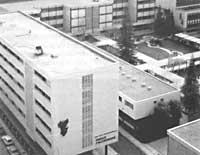
José María Arizmendiarrieta returned from exile to Mondragón in 1941. On 10 October 1943 he created the Polytechnic School to give an exit to the local youth. At first they were only 20 boys and were under the auspices of “Fathers of Catholic Action”. As this institution was protected by the Church, connections were created. Therefore, an independent organization had to be created. Therefore, in 1948 the “League of Education and Culture” was created.
This institution became the “José María Arizmendiarrieta” polytechnic school in 1980. The first headquarters of the school was located in the Biteri schools and in the current place of 1964, in Iturripe. Since applications for access to the school are made from all over the Basque Country, conditions have been necessary. Therefore, the youngest have to learn in the schools of their villages. The studies of medium teachings are open to those of Arrasate and the valley and those of engineering to students from all over the Basque Country.
Current affairs
Over time the activity of the School has changed. At this time, the activities are as follows:
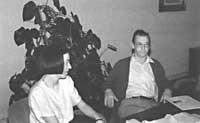
Regulated studies
- The General Baccalaureate is allowed for children aged 14 to 16, who must be from Arrasate or Aramaio. These studies will not have greater extension in the school, since they want to enhance other higher level studies.
- The Technical Training is for children aged 16 to 19. The objective is to acquire basic knowledge of Numerical Control, Informatics, Robotics, Automatic and Electronics in different areas of the technique.
- The Higher Industrial Technical Baccalaureate is aimed at children aged 16 to 18. Students prepare for scientific studies.
- Technical Engineering The following areas are currently being worked on:
- Design and manufacturing
- Production
- Technical Informatics
- Electronics industry and process control
- Microelectronics
Complementary training
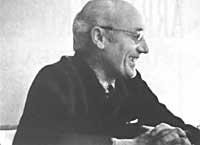
Training never ends. When students finish their studies, to see what is the pace of technology innovation, they need recycling. In this line the following entities have been created:
- The Permanent School has organized this center together with ETEO (Oñati School of Business Studies). To meet the recycling needs of companies, all types of courses are offered in a comprehensive, direct or subcontracted manner. An extensive catalogue of existing courses is published annually. The areas of work are:
- New technologies: Mechanics, Informatics and Electronics
- Production engineering
- Industrial design
- Administration and finance
- Business Management
- Sustainable Marketing activity for this year is explained in the table above.
- The aim of this Saiolan Center is to: “Analyze technical and business aspects around a product to finally become business activity” Sometimes, the development of the new business activity drives the creation of a new company, but sometimes a new activity starts in existing companies. This path is proposed for those who have completed their studies and consists of three phases. The first one, dedicated to business training, lasts 4 months. In the second one works the promotion project that has a duration of 8 months. Finally, the third focuses on the creation of the company and has a minimum duration of 4 months. Currently there are 20 interns and the main areas of work are:
- Flexibility of some production processes
- New manufacturing technologies
- Food Science and Technology
- Biotechnology
- New materials
- Services
- The aim of this Goier management centre is to: “Those who have completed the best level of Technical Engineering have worked for a period of time at universities abroad to apply what they have learned to their companies” Relations are maintained with universities in France, Italy, Switzerland, Germany, Canada, Denmark and the United Kingdom. He also participates in programs such as ERASMUS and COMETT organized by the EVE. In the last year a total of 39 students participated in different programs. At the same time, foreign students have addressed Arrasate-Mondragón as an exchange within European programs.
Management
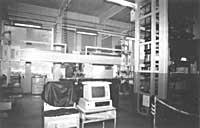
As mentioned above, ESKOLA is a Cooperative. The highest decision-making body is the General Assembly, in which three sectors participate:
- Working partners who work or teach at the Cooperative.
- Collaborating partners (mainly companies).
- Students over 16 years and under 16 years.
These three groups have the same participation in the General Assembly, that is, 87 members each. The Governing Council is elected from the General Assembly. The Council consists of a total of 12 members who choose four of the three levels mentioned.
From the economic point of view, the budget for sustenance amounts to 845 million and that of investments and amortizations to 151 million. The budgets for sustaining legally regulated teachings are covered for the 1989-1990 academic year in the following proportion:
- Public subsidy 44%
- Student body 32%
- Own resources 24%
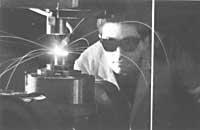
In the section “Own resources”, subsidies from Collaborating Companies are taken into account. These companies have supplied equipment to the School facilities.
Public Administration grants are different for each level of education. Although in the first courses subsidies are obtained between 80% and 90%, in technical engineering the subsidy is 15%.
In the cases of GOIER, IRAUNKORRA and SAIOLAN, the money comes from the Department of Labor of the Basque Government, the Provincial Councils of Gipuzkoa and Bizkaia and the collaborating companies. In the conversation with the school members, the problem of the job was also raised. Right now, anyone who learns technical engineering finds work. Those of Master's and Vocational Training, although it costs them a little more, find work.
With the visit to the school facilities we ended the day of Arrasate. Workshops, laboratories, etc. it didn't seem like we were at school, but in different workshops. Among the lathes that were in the mechanical factory, we saw the punching machine designed at the School. This machine is made entirely by the students of the School. Through this example, the students showed us that all the projects carried out are carried out. The latest technologies also have their place in the School. A room is being formed dedicated to the production of fiberglass products, but some products, such as molds, are already running.
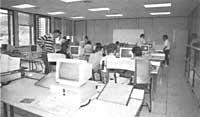
In the electronics classroom, CAD room, computer classroom, etc., we saw the modern equipment and those who were working there were working in small working groups and in concrete projects.
At this time when the reform of the studies comes, the Arrasate-Mondragón School began the reform long ago, uniting the teaching with the world of work.
As I said at the beginning of this article, do you not think that the School has a great influence on its environment.
Buletina
Bidali zure helbide elektronikoa eta jaso asteroko buletina zure sarrera-ontzian












